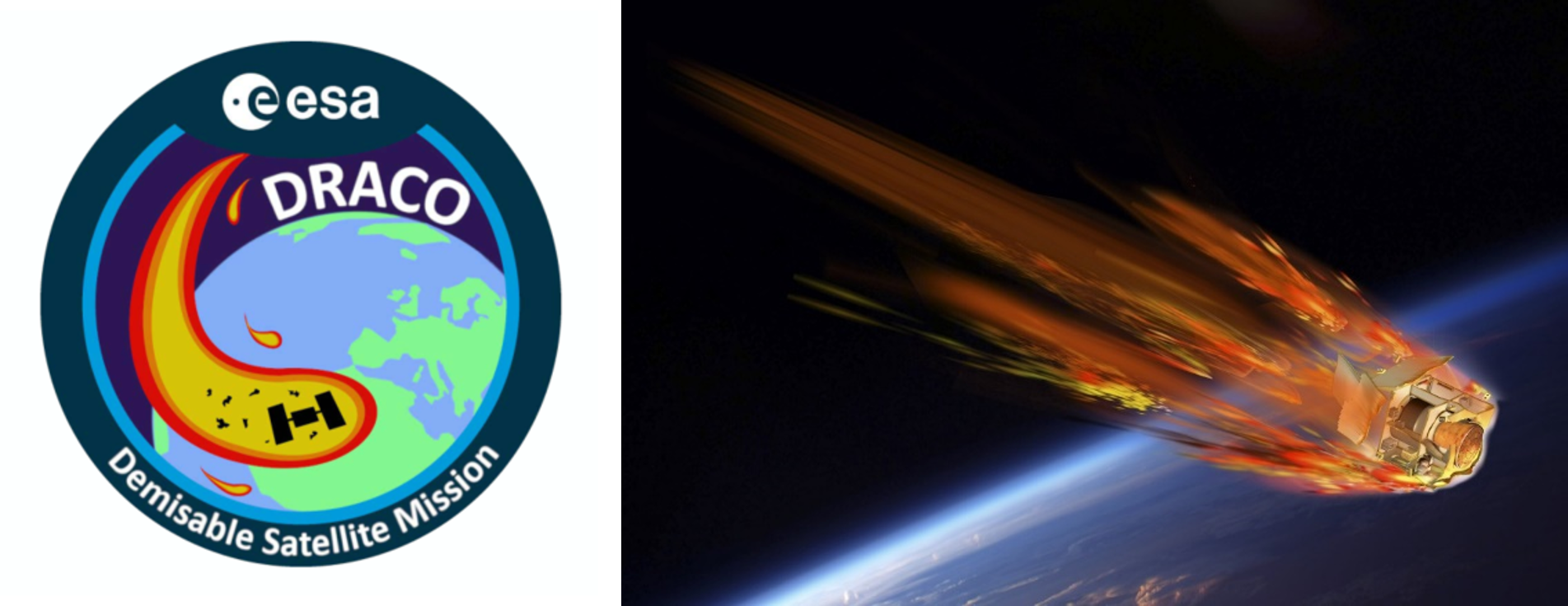Posted on 20th November 2023: DRACO break-up instrument update
2023 has seen the kick-off of FGE’s involvement in the DRACO (Destructive Re-entry Assessment Container Object) mission.
The DRACO mission is a debris re-entry experiment with the main goal of making in situ physical
measurements of the onset of spacecraft fragmentation in a re-entry environment. The physics of
the destructive break-up processes is poorly understood. Ground experiments are limited in size
and scope and as a result are not fully representative, and numerical tools cannot be critically
linked to remote observation campaigns. DRACO aims to collect data to allow the void in predictive
capabilities to be addressed and inform as to the key destructive processes at play during re-entry.
FGE is leading the team responsible for the development of the instrument breadboard which will be responsible for collecting and transmitting the data back to the ground. The team comprises Belstead Research Limited (BRL), Direct Imaging AnaLytics (DIAL), and Vorticity. The instrument is split into two sub-elements: a system remaining on the host-platform which will include instrumentation such as cameras (VIS, IR, SWIR), thermocouples, strain gauges, and a survivable capsule that will eject from the host platform and transmit the data to ground after parachute deployment.
The development of the DRACO host platform is currently being led by DEIMOS. The instrument is will measure the response of flight hardware representative test objects that will be incorporated into the DRACO host platform design. This aims to deliver the much-anticipated data describing their demise as well as information concerning the onset of structural failure.
Posted on 24th October 2023: ExoMars 2028 Rosalind Franklin Mission
FGE are delighted to be providing support to Thales Alenia Space (Prime contractor in Turin Italy) and ESA concerning descent module aerodynamics and aerothermodynamics for phase B1 capsule design activities. We are again working closely with colleagues at Ariane Group to leverage knowledge inherited from the Schiaparelli design activities, as well as crucial flight data, to support system PDR. We look forward to working on this project in the coming months to support phase B2 activities.
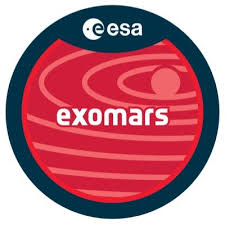 ExoMars rebirth. Does life exist, or is it still present on Mars?
ExoMars rebirth. Does life exist, or is it still present on Mars?
Posted on 3rd August 2022: The Second International FAR Conference
Thanks to all who came to our presentations at ESA's second FAR meeting in Heilbronn, Germany. We presented on Fleixble TPS thermal responce and ongoing software developments to support the interpretation and prediction of spectrographic signals from the remote observation of destructive entry events such as ATV-1. A special thanks to all the ESA staff that made the event such a success.
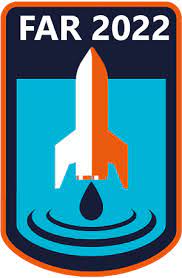 19th-23rd June 2022
19th-23rd June 2022
Posted on 10th June 2021: Space Transportation System Reusability Workshop
FGE led a workshop involving major European launch vehicle providers tackling the challenge of how to engineer future reusable space transportation systems.
Thales Alenia Space, DLR, Pangea Aerospace, Reaction Engines, MT Aerospace, Rocket Factory Augsburg, MT Aerospace and Imperial College were among the participants.
The workshop formed part of a current European Space Agency funded activity, for which FGE are the prime, targeting the development of structural health monitoring
technologies to address some of the key challenges posed by reusable space transportation systems. In particular, the activity is focusing on lifting
atmospheric re-entry vehicles and vertical light launchers.
The workshop addressed a selection of pertinent questions around the business case for re-use, defining measures of operational system effectiveness and
re-usable structural design considerations. This provided an invaluable opportunity to ensure the scope of the main activity will be highly relevant and beneficial to the community.
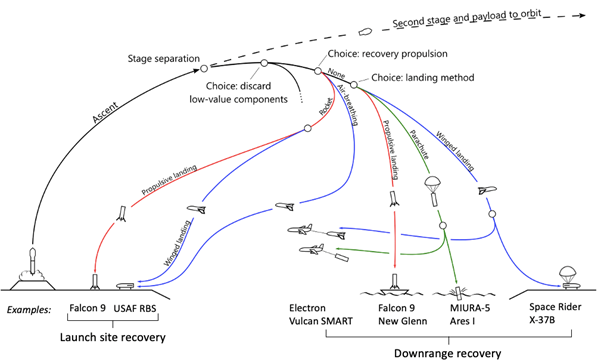 Reuse Concepts
Reuse Concepts
Posted on 29th October 2020: Clean Space activities update
FGE continues to drive change to progress European understanding of the on-ground risks associated with the destructive re-entry of spacecraft at end of life.
FGE led an international consortium to define requirements, perform concept trades and assess the feasibility of prospective destructive entry flight experiments.
If taken to flight, the selected concepts promise to collect vitally needed breakup and fragmentation data during re-entry.
The fragmentation process is currently poorly understood, but is a significant driver of the potential on-ground casualty risk resulting from destructive entry.
This provides a pressing need for the collection of these data.
FGE also contributed towards a recently completed project concerning the Probabilistic Analysis of Destructive Re-Entry (PADRE, led by Belstead Research).
This project provided important guidance concerning the best-practice of modelling destructive entry and proved the utility of adopting a stochastic approach based on Monte-Carlo analysis.
Data from hundreds of millions of individual component trajectories were processed as part of this project.
This represents a step change in capability for the European Space Agency and industrial partners.
FGE is proud to have worked alongside a number of academic and industrial partners as part of these activities including:
Airbus Defence and Space, Ariane Group, Belstead Research Limited, DLR, IRS, R.Tech, Thales Alenia Space and the University of Strathclyde.
Posted on 5th October 2020: FGE Supports Hypersonic Research in The UK
Two PhD students we supported during their studies recently passed their vivas: Nathan Donaldson from the University of Oxford (Hypersonic Modelling and Testing of Space Debris During Planetary Entry) and Thomas Rees from Imperial College London (Hypersonic Aerothermodynamics of Satellite Demise). It was a privilege to follow both research activities from conception to completion: congratulations! We're also delighted to have supported Dr. Tobias Hermann in his successful application for a UKRI Future Leaders Fellowship. This is an exciting research oportunity that will extend the UK's hypersonic ground testing capability by novel application of plasma generator technology. We're looking forward to collaborating on future projects.
Posted on 9th October 2019: ESA FAR Conference Update
Many thanks to all who took the time to talk with us at the FAR conference in Monopoli last week, and a special thanks to all ESA's administrative and technical staff for organising such a successful event. We gave 9 presentations and were kindly credited as co-authors in a further 10, which we think is a company record for a conference. We look forward to meeting you all again next time.
Posted on 25th June 2019: The International Conference on Flight vehicles, Aerothermodynamics and Re-entry Missions and Engineering (FAR)
FGE will be present at ESA's first FAR meeting in Monopoli, Italy. We will be presenting on a number of topics including: ExoMars Schiaparelli post flight analysis, inflatable and deployable aero-decelerators, aspects of destructive entry and on-ground casualty risk and aerodatabase generation from CFD and flight experiment.
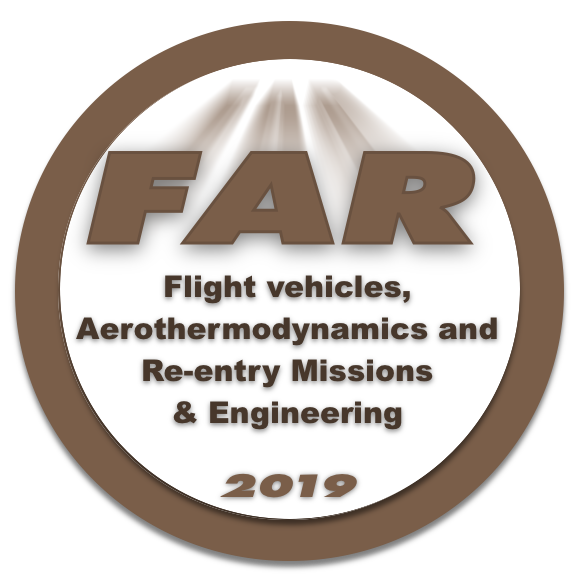 30th September - 3rd October 2019
30th September - 3rd October 2019
Posted on 23rd April 2019: International Planetary Probe Workshop 2019
FGE will be present at the next IPPW meeting in Oxford from 8-12 July. We will be talking about rebuilding the entry phase of the ExoMars Schiaparelli lander as well as destructive entry analysis for Mars planetary protection.
Posted on 22nd November 2018: ESTIMATE Database Goes Live
The European Space maTerIal deMisability dATabasE (ESTIMATE) is now live. The database brings together experimental results and analysis performed by two consortia (CoDM primed by FGE and CHARDEM primed by DLR) relevant to material modelling for destructive entry applications. Experimental results are drawn together from the LBK facilities at DLR Cologne, the VKI Plasmatron in Belgium and the PWK facilities at IRS Stuttgart. Access to the database is controlled by ESA's Spacecraft Debris Office. It is intended to support European entities in destructive entry assessments.
 Artist's impression of ATV destructive entry. Credit ESA.
Artist's impression of ATV destructive entry. Credit ESA.
Posted on 15th October 2018: CFD Heat Transfer to Debris Items in Preparation for Wind Tunnel Testing
On 18 September 2018 Thomas Rees presented his paper, entitled ‘The Effect of Reynolds Number on the Hypersonic Flow around Faceted Shapes’ at the 22nd AIAA International Space Planes and Hypersonic Systems and Technologies Conference, which took place in Orlando, Florida. Thomas is pursuing a PhD at Imperial College with the aim of developing improved models for spacecraft fragmentation during re-entry, with applications to improving assessments of ground-casualty risk.
Thomas used FGE's inhouse CFD code TINA to investigate the Mach 5 flow around a square (representing a faceted debris item) across a large range of flow conditions. The Reynolds number dependent fluxes to faceted objects are currently not well represented in satellite demise prediction tools. Investigating these phenomena will help improve state-of-the-art heating models for destructive entry.
The project is funded by the European Space Agency and EPSRC, through the Imperial College Centre for Doctoral Training in Fluid Dynamics. Fluid Gravity have provided extensive support, technical advice, and analysis tools during the course of the project.
For those interested in reading the full paper the DOI is: 10.2514/6.2018-5197
 Synthetic schlieren images for several potential wind tunnel conditions
Synthetic schlieren images for several potential wind tunnel conditions
Posted on 25th September 2018: FGE attends the 10th Ablation Workshop in Burlington, Vermont, US
FGE presented an overview of our material response code MABLE at the 10th Ablation Workshop. MABLE's primary use is for simulating the response of spacecraft thermal protection systems to the high heat fluxes experienced during aerodynamic breaking.
The presentation focused on the recently implemented multi-point flux approximation (MPFA) and the novel method used for calculating the surface deformation due to ablation. Both of these proved to be of particular interest to the conference.
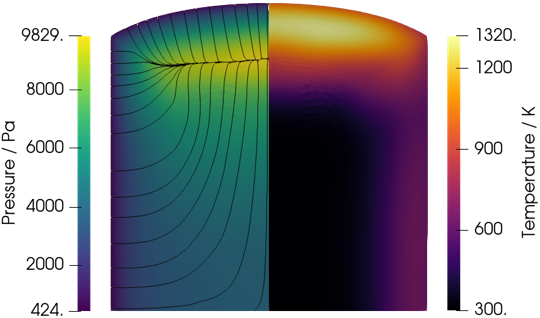 Thermal field, pressure field and pyrolysis gas stream lines
Thermal field, pressure field and pyrolysis gas stream lines within a sample of TACOT, 60s in to the Ablation Workshop test case 3.1;
simulated using FGE's material response code MABLE.
Posted on 10th August 2018: FGE Assist in the Development of European RTG Prototype
The University of Leicester is spearheading the development of new power generation technologies for space exploration as part of a European Space Agency funded programme. Radioisotope power sources are an important technology for future European space exploration missions as their use would result in more capable spacecraft, and probes that can access distant, cold, dark and inhospitable environments.
The University of Leicester, together with Airbus Defence and Space Ltd, Queen Mary University of London, European Thermodynamics Ltd., Lockheed Martin UK and Fluid Gravity Engineering Ltd. have developed and tested a 10 Watt prototype of a radioisotope thermoelectric generator (RTG).
From this press release
FGE assisted in the material properties definition for the RTG aeroshell as well as computing the high temeprature material responce when subjected to a range of pre-specified aerothermal conditions.
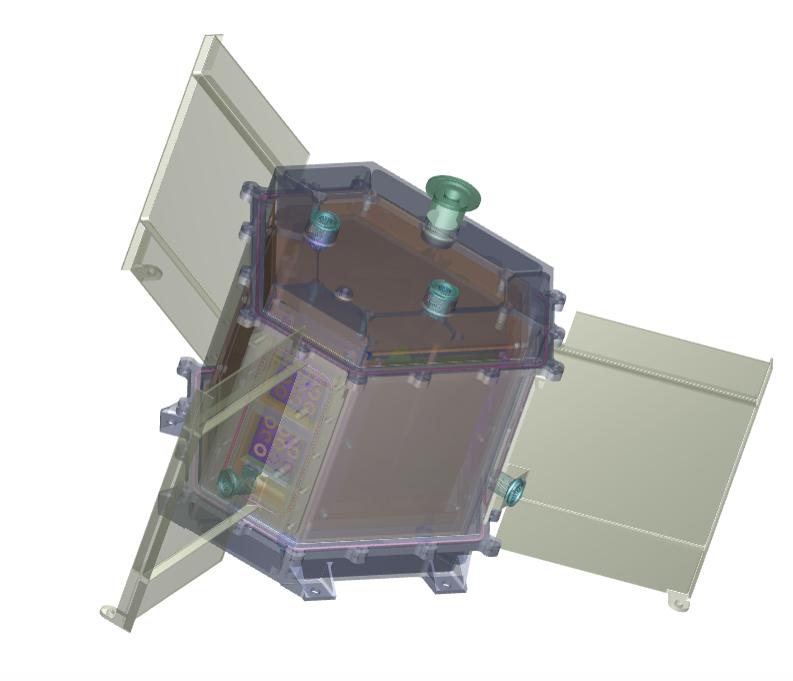 Radioisotope Thermoelectric Generator,
Radioisotope Thermoelectric Generator, image courtesy of University of Leicester
Posted on 5th June 2018: ESA Space Engineering & Technology Final Presentation Days (SET-FPDs)
FGE will be presenting the main conclusions from the "Characterisation of Demisable Materials" TRP at ESA's June SET-FPD. FGE led an international consortium to deliver this project including AAC(AT), BRL(UK), IRS(DE) and VKI(BE). We will be presenting on the 19th June 2018.
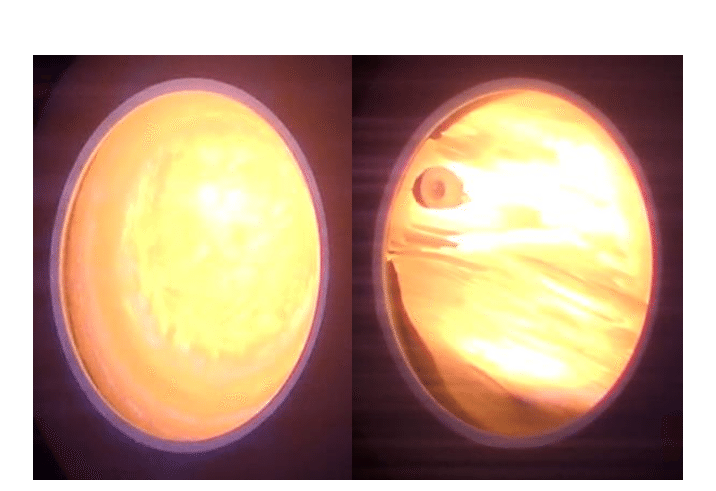 Ablation of CFRP samples in an IRS plasma wind tunnel
Ablation of CFRP samples in an IRS plasma wind tunnel taken from Pagan et al.
Posted on 4th June 2018: FGE Clean Space and Destructive Entry Activities
FGE has been actively engaged in clean space activities for ESA since 2013 when development of the Spacecraft Aerothermal Model (SAM) started. SAM is jointly developed with BRL.
SAM was created for use within ESA's Concurrent Design Facility (CDF), so was developed to deliver improved modelling of demise phenomena, whilst maintaining the short execution times required by the iterative design methodology.
SAM models the fragmentation and component-demise of re-entering spacecraft at end of life (i.e. destructive entry). Destructive entry can be modelled using a range of fidelities (spanning the object orientated and spacecraft orientated approaches) allowing modelling sensitivities to be explored within a consistent framework.
Recent activities using SAM include: Study of the demisability of optical payloads (led by FGE for ESA September 2017); Characterisation of Demisable Materials (led by FGE for ESA March 2018) and ExoMars 2020 Carrier Model Break-up and Burn-up Assessment for Planetary Protection (completed for OHB April 2018).
 SAM Spacecraft Geometry Builder
SAM Spacecraft Geometry Builder
Posted on 26th July 2017: Congratulations to Thomas Rees for winning the "Best Poster" award at the 2017 UK Fluids Conference
Thomas is pursuing a PhD with the aim of developing improved models for spacecraft fragmentation with applications to assessing ground casualty risk at spacecraft end-of-life (destructive entry).
His work is supported by EPSRC, FGE and the European Space Agency (ESA) via the Imperial College CDT in fluid dynamics across scales.
Thomas Rees' winning poster (Full res version)
Posted on 26th July 2017: FGE begins technical development program for UK Two-Stage-To-Orbit Launcher concept
FGE forms part of a UK Supply Chain coordinated by Orbital Access Ltd.
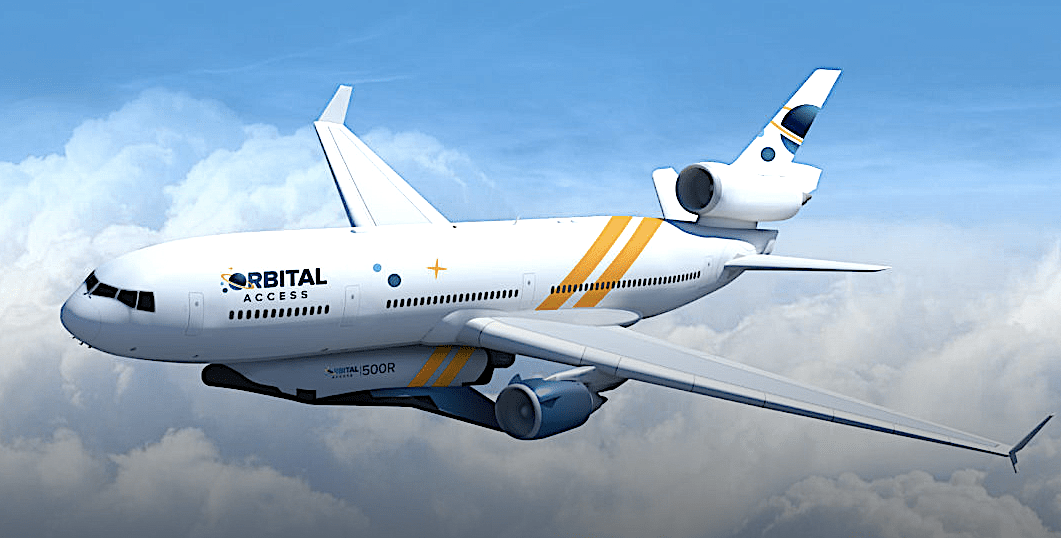 Image credit Orbital Access
Image credit Orbital Access
Posted on 8th June 2017: Future ESA Space Exploration Projects: Earth Return Capsules and Celestial Resource Exploitation
FGE has been actively supporting ESA in preparation for future space exploration missions. Key areas involve the maturation of Earth Return Capsule (ERC) technologies and research into Celestial Resource Exploitation using regoliths.
ERC Technologies
FGE have contributed to flight tests performed by Vorticity Ltd in the form of capsule shape selection and the exploitation of flight data (update aerodynamic databases). Aerodynamic databases and stability assessments were performed using our in-house trajectory code TRAJ6D. Flights tests were achieved by using a high-altitude balloon drop offering an excellent environment to study the subsonic and transonic stability of prospective ERC capsules (a critical aspect of high speed Earth return capability). These test were highly successful in defining the capsule stability characteristics (an activity that is very challenging in ground test facilities).
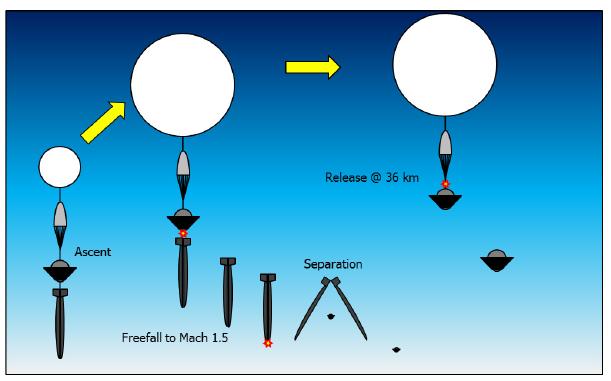 Image courtesy of Vorticity
Image courtesy of Vorticity
Resource Exploitation
FGE are providing calculations to assist the design and planning of the sample analysis phase of future space exploration missions. The preservation of regolith volatiles (most notably water) is particularly important as a resource for future exploration missions. This work is being performed for the Open University in support of the ESA PROSPECT programme which is scheduled to be flown on the ESA/ROSCOSMOS Lunar-Resurs 1 mission.
We are actively pursuing regolith contamination and surface alteration studies to calculate the effect of thruster plume impingement on mission and science requirements. Calculations have been performed to support the L-VRAP instrument; these methods are also applicable to the analysis aspect of PROSPECT.
FGE are also leading an activity to quantify regolith contamination by thruster plumes experimentally. Here mono and bi-propellant thrusters are being fired within the STG-K facility in DLR Goettingen to expose regolith analogues to representative in-space plume impingement conditions. We anticipate some unique data from this activity to support future mission requirements for the study and/or exploitation of celestial regoliths.
 Image courtesy DLR
Image courtesy DLR
Posted on 6th June 2017: FGE performs in-space thruster plume calculation to support spacecraft impingement assessments
FGE performed freely expanding plume calculations for the LEROS-10 bi-propellant thruster for Nammo Westcott Ltd in support of the ESA/CNES NEOSAT programme. The work necessarily involved performing hybrid CFD-DSMC simulations due to the large range of rarefaction (continuum to free molecular) encountered in this problem. NEOSAT aims at developing, qualifying and validating in orbit next-generation satellite platforms for the core satcom market. A crucial objective for Neosat is to reduce the cost of a satellites in orbit by 30% compared with today’s designs by the end of the decade.
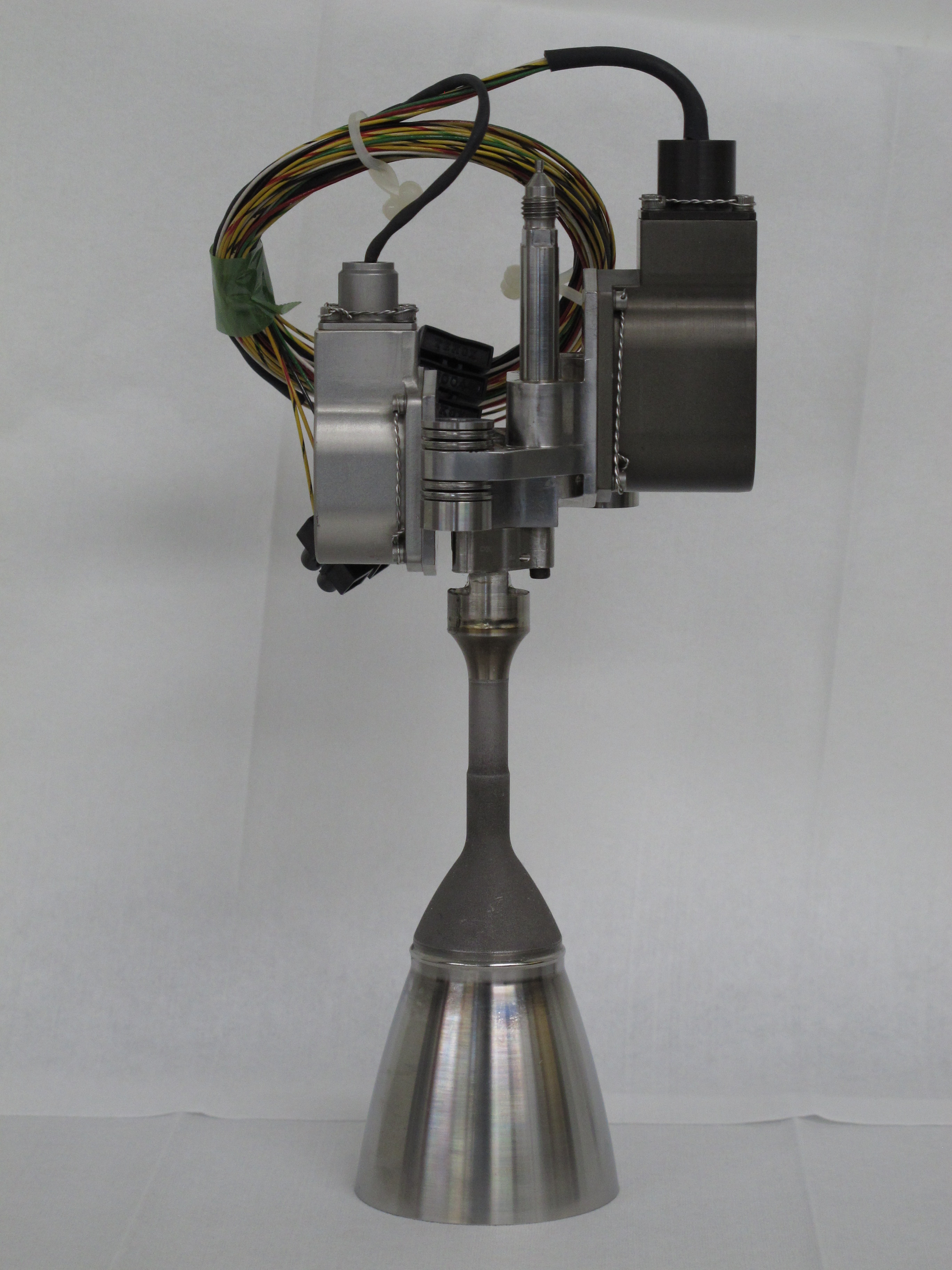 Image courtesy of Nammo Westcott Ltd
Image courtesy of Nammo Westcott Ltd
Posted on 25th May 2017: The Schiaparelli landing investigation has completed
A summary report has been released which confirms that: "Correct entry and aero braking in the Martian atmosphere" was completed successfully by the ExoMars Schiaparelli lander. More over: "The dynamic conditions at the moment of parachute deployment derived from telemetry showed a total angle of attack (AOA) estimated of about 6.5 deg and a lateral angular rate < 3 deg/s". This is well within the design-limit criteria for successful parachute deployment.
In contrast to Beagle2, telemetry data has enabled an examination of the hypersonic entry phase to be performed by ESA and NASA/JPL. The findings of this investigation demonstrates that the FGE led international consortium successfully delivered the aerodynamic and aerothermodynamic activities required to achieve a successful Martian entry. Observational data indicates that a successful Martian entry was also achieved for Beagle2. These successes extend FGE's flight-proven heritage for planetary entry applications.
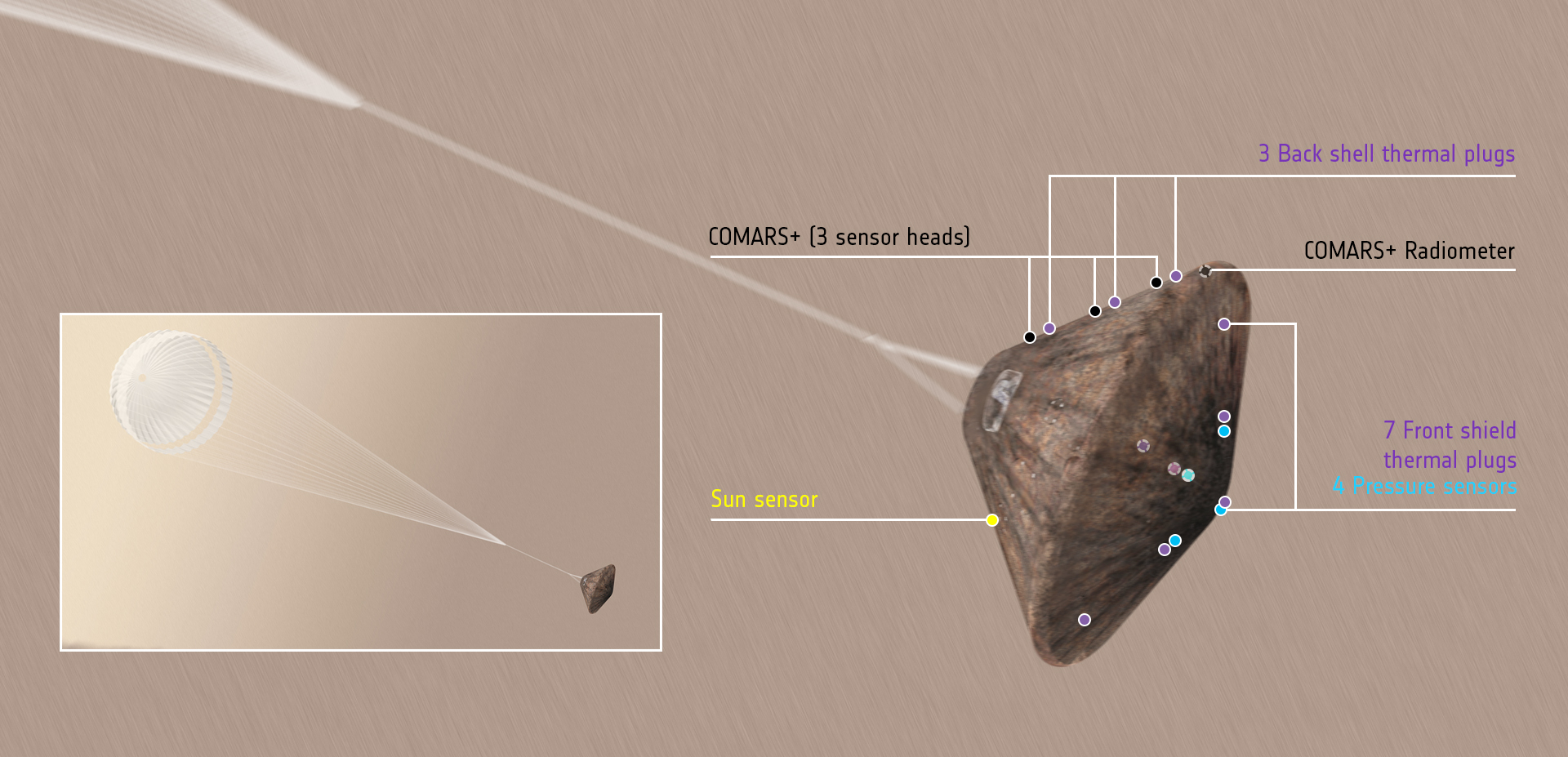 Heatshield sensors
Heatshield sensors(copyright ESA/ATG medialab)
Posted on 10th April 2017: First Flight of ESA SUPERMAX Capsule
The SUPERMAX capsule flew for the first time from Esrange Kiruna on Friday the 7th of April. The capsule is designed to ride piggy-back on the Maxus Sounding Rocket, achieving an apogee of approximately 700km before returning to Earth where it has to pass through a period of hypersonic heating at Mach 10 before decelerating to speeds suitable for supersonic parachute testing (the capsule's main technology drive). FGE contributed hypersonic aerodynamic and aerothermodynamic calculations (databases) for the capsule and provided consultancy support to the thermal management of the payload. The capsule was designed and built by Vorticity Ltd (another UK SME) making the project a huge success for UK small enterprise.
The capsule was recovered after a successful supersonic parachute test and all engineering data was successfully recovered. Both Vorticity and FGE anticipate further use of the capsule design for continued re-entry system technology developments.
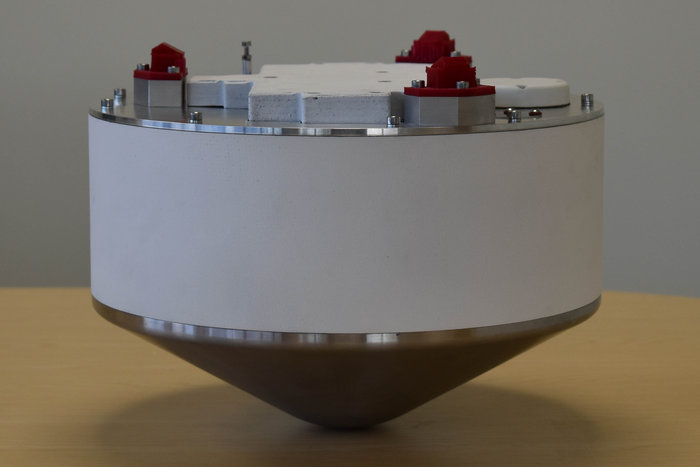 SUpersonic Parachute Experiment Ride on MAXus (SUPERMAX)
SUpersonic Parachute Experiment Ride on MAXus (SUPERMAX)(copyright Vorticity Ltd)
Posted on 24th October 2016: Schiaparelli Entry declared an early success by ESA
“The first analysis suggests that most of the steps required for the entry and descent were successfully completed, particularly the deceleration from 21,000 kilometers per hour (13,000 mph) at the top of the atmosphere down to having the probe suspended on its parachute,” said David Parker, director of ESA’s human spaceflight and robotic exploration division at a post flight press briefing on 20th October 2016, ESOC Darmstadt.
See also this article quoting ExoMars project scientist Jorge Vago for latest thinking from ESA regarding possible failure scenarios.
Despite crash landing on the surface of Mars following premature parachute ejection and thruster shut down, the ExoMars Amelia team believe much of the scientific data needed (99%) has been successfully collected and will eventually be available for analysis: an outcome that would not be possible without a successful entry phase.
FGE led an international team of specialists from industry and academia responsible for all aerodynamic and aerothermodynamic activities for the ExoMars Schiaparelli lander, who reported to the overall system prime Thales Alenia.
Posted on 17th October 2016: The Schiaparelli probe arrives at Mars on Wednesday 19th October 2016
Fluid Gravity Engineering were the prime contractor for the aero-thermal studies supporting the atmospheric entry to Mars as discussed briefly here.
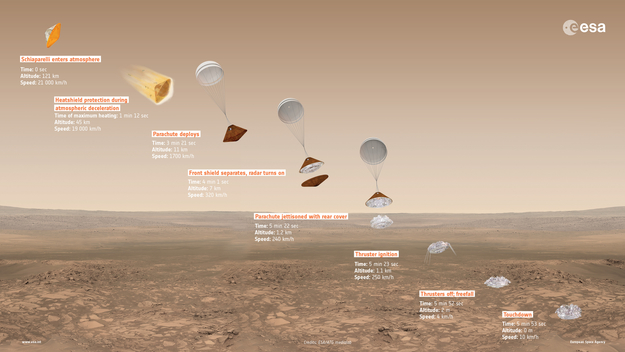 Overview of Schiaparelli's entry, descent and landing sequence on Mars
Overview of Schiaparelli's entry, descent and landing sequence on Mars(copyright ESA/ATG medialab)
Posted on 16th January 2015: Beagle2 has been found intact on the Martian surface after 12 years, vindicating the EDLS design
FGE was at the forefront of the Beagle2 design activities. We performed capsule shape optimisation, aerodynamic and aerothermal database construction and entry trajectory calculations. Today's announcement is available here.
We are currently responsible for aerodynamics and aero-heating on the planned 2016 Exomars demonstration lander. This, together with the feasibility study which determined the aeroshape of the successful Huygens Titan lander, means that we are now the most experienced European planetary entry-capsule aerothermodynamics team.
 Beagle2 model on a simulated Mars surface
Beagle2 model on a simulated Mars surface (taken from the link above)
